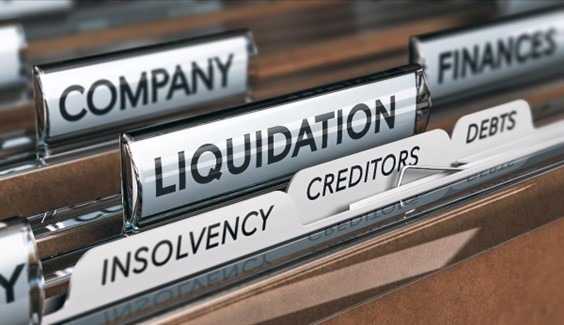A rise in insolvencies is becoming a growing concern for businesses offering trade credit, with load shedding posing significant challenges, says Frank Knight, CEO of credit management services company Debtsource.
While there is no direct correlation between load shedding and business insolvencies, additional costs and disruptions caused by power outages can adversely affect cash flow and profitability.
As a creditor, it is crucial to identify early warning signs of customer insolvency to protect one’s business and minimise potential losses. By promptly recognising these indicators, companies can take proactive steps to mitigate risks and ensure the soundness of their own financial position.
Rising interest rates are the primary contributor to the rise in insolvencies. “Interest rate hikes correlate with an increase in delinquency ratios in certain markets. Even a small increase in the repo rate leads to a corresponding rise in delinquency. By staying informed about the potential impact on your customers, you can proactively manage your credit exposure and adjust risk management strategies accordingly,” Knight says.
On top of rates, he describes several issues exacerbating the increase locally: South Africa’s elevated dependence on portfolio investment flows, currency volatility and aging infrastructure. “Insurance providers have observed an increase in claims related to insolvencies. Debtsource reports a 27% year-on-year increase in delinquency ratios, which closely aligns with trade credit insurance provider Allianz Trade’s prediction of a 21% increase in insolvencies over the next 12 months.”
Despite relatively stable figures for summonses, judgements, and liquidations, Knight points to a potential lag effect preventing these statistics from reflecting the current state of insolvencies.
Considering the rising risk of insolvencies, he urges businesses to closely monitor their credit clients’ financial stability and explore strategies to mitigate potential risks. “Trade credit insurance can be an effective tool to protect against insolvencies and ensure the sustainability of businesses in uncertain economic times.
“The lack of formal business rescue statistics makes it difficult to gauge the impact of this process on insolvencies. However, it is evident that more businesses are opting for business rescue and staying in the process for longer periods. Company boards and directors are becoming more aware of their responsibilities under the Companies Act, leading them to initiate business rescue proceedings early – before summonses and judgements are issued.”
Entering business rescue proceedings represents one of the starkest danger signs of customer insolvency but by then it may be too late for creditors. “While the aim of business rescue is to avoid liquidation and provide a better outcome for creditors, the success rate is disappointingly low, with only around 12% of companies successfully implementing their plans. By then, there is no guarantee that creditors will receive any money owed to them. Creditors must be aware of this risk and should not rely solely on the assumption that business rescue will lead to a favourable outcome.”
He lists the warning signs to be monitored as there are indicators that can help identify potential insolvency risks:
Delinquency ratios – these are a key factor to consider as they provide valuable insights into the financial health of businesses. Unlike summonses, judgements, and liquidations, which represent businesses that have already reached a critical tipping point, delinquency ratios offer an assessment of potential insolvencies on a more forward-looking perspective. These gauge the percentage of outstanding overdue debts and an increase in this ratio can signal financial distress and a higher likelihood of insolvency. Monitoring this can give valuable insight into creditor’s financial health and enable an informed assessment of the risk involved in extending further credit.
High or rising level of debt – if a company has a significant amount of outstanding debt and is struggling to make payments, it may be an indication of financial distress. Keeping a close eye on customer debt levels and payment patterns can help identify potential warning signs.
Cash flow – if a company consistently struggles to pay its bills on time and has limited cash reserves, it may be a cautionary sign of impending insolvency. Several factors can contribute to cash flow issues, including declining sales, high overhead costs, and poor financial management.
Broader industry trends – these can indicate a higher risk of insolvency as companies operating in declining industries with shrinking profit margins are more susceptible to financial difficulties.
To monitor all these warning signals, up-to-date and accurate management accounts are essential to understand clients’ financial standing, yet many businesses fail to provide these. Outdated accounts do not provide a clear understanding of a business’s financial position and delays and inaccuracies in reporting can lead to discrepancies between a company’s assets and liabilities, resulting in further financial difficulties.
Credit records play a crucial role in identifying potential insolvencies. Maintaining a healthy credit record is vital for businesses as a poor credit record can limit access to trade credit, increasing reliance on difficult-to-obtain banking trade credit.
“A warning sign a request for extended payment terms. While there may be valid reasons, it could also indicate underlying financial difficulties. Open and honest discussions with customers are crucial to assess the risk of insolvency,” says Knight.
“Finally, companies should be cautious about giving excessive security to banks in exchange for limited funding. While banks naturally seek as much security as possible, companies need to evaluate whether the amount of funding justifies the collateral requested. Over-reliance on bank facilities and limited access to alternative financing options can place additional strain on a company’s finances and increase the risk of insolvency,” he says.

